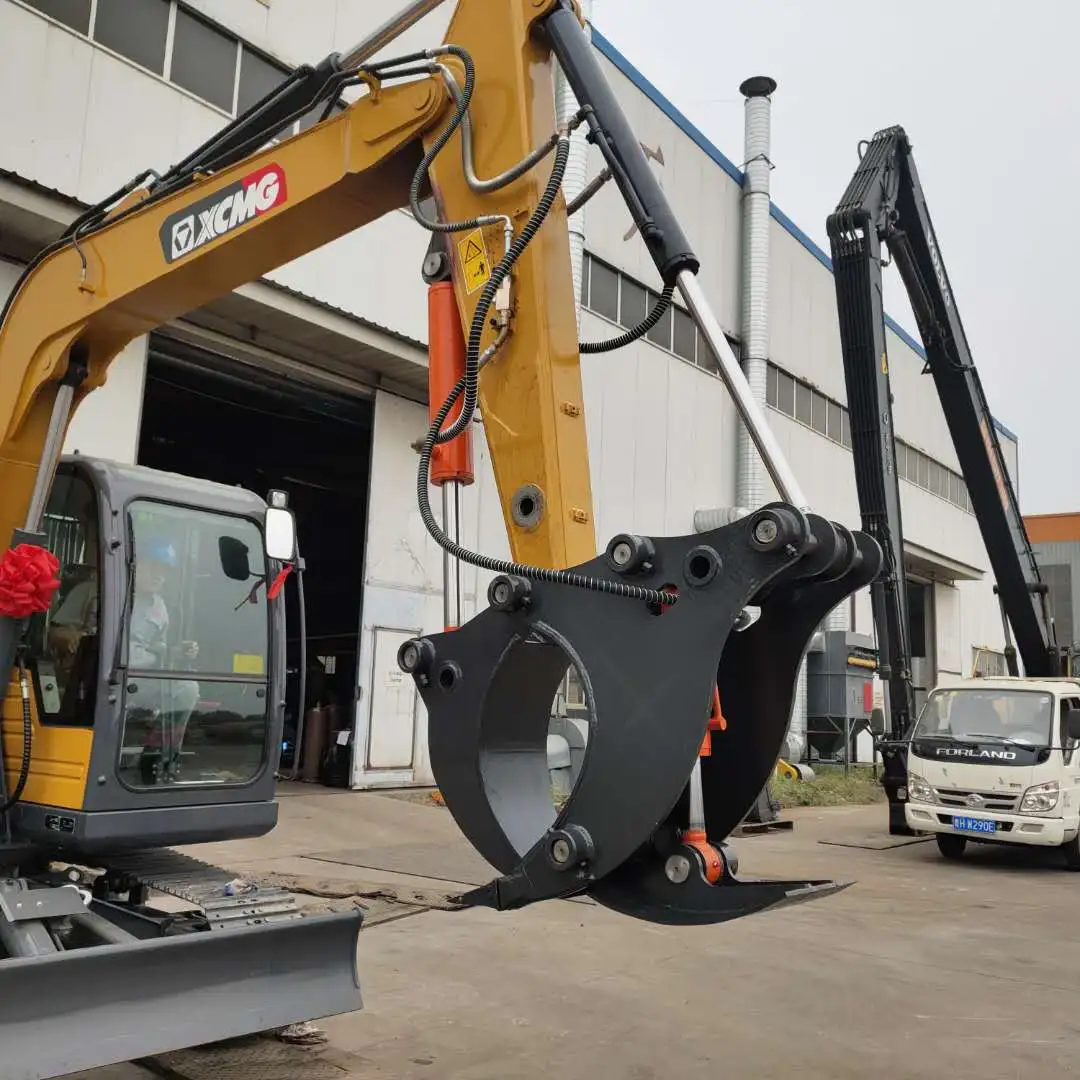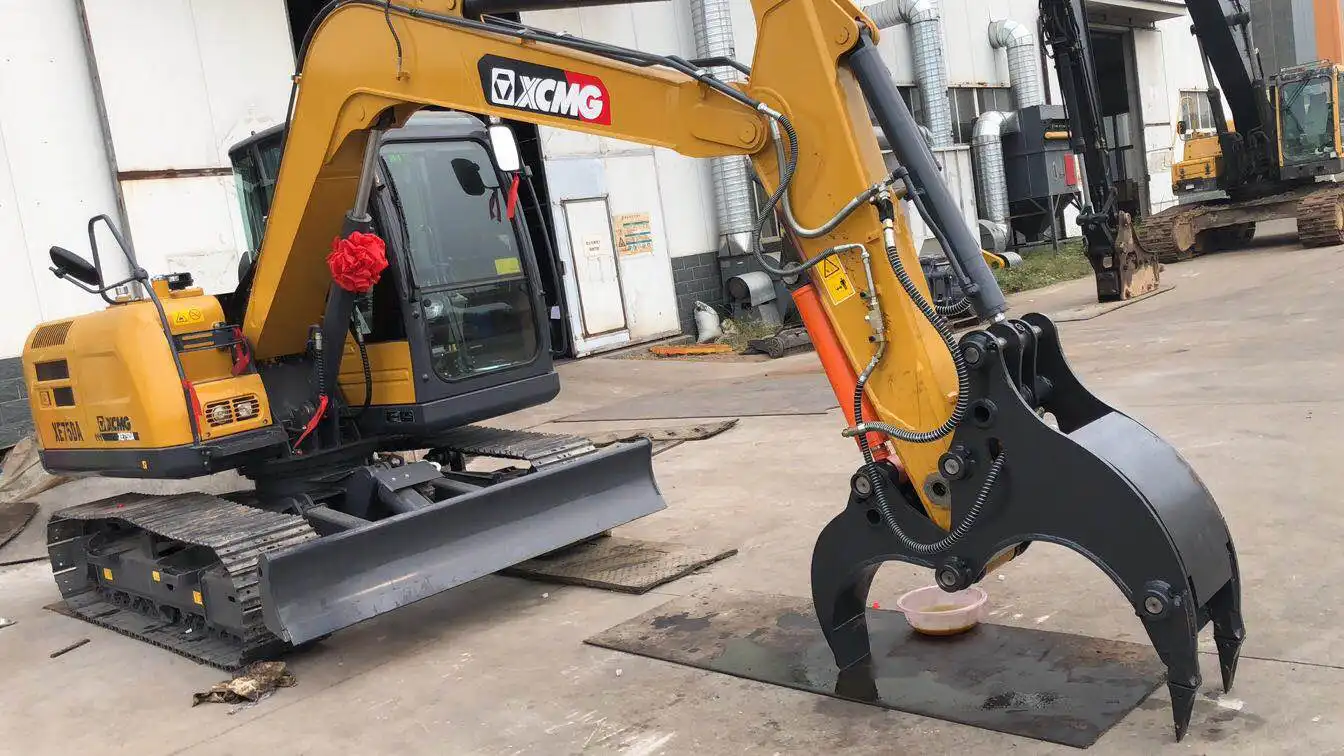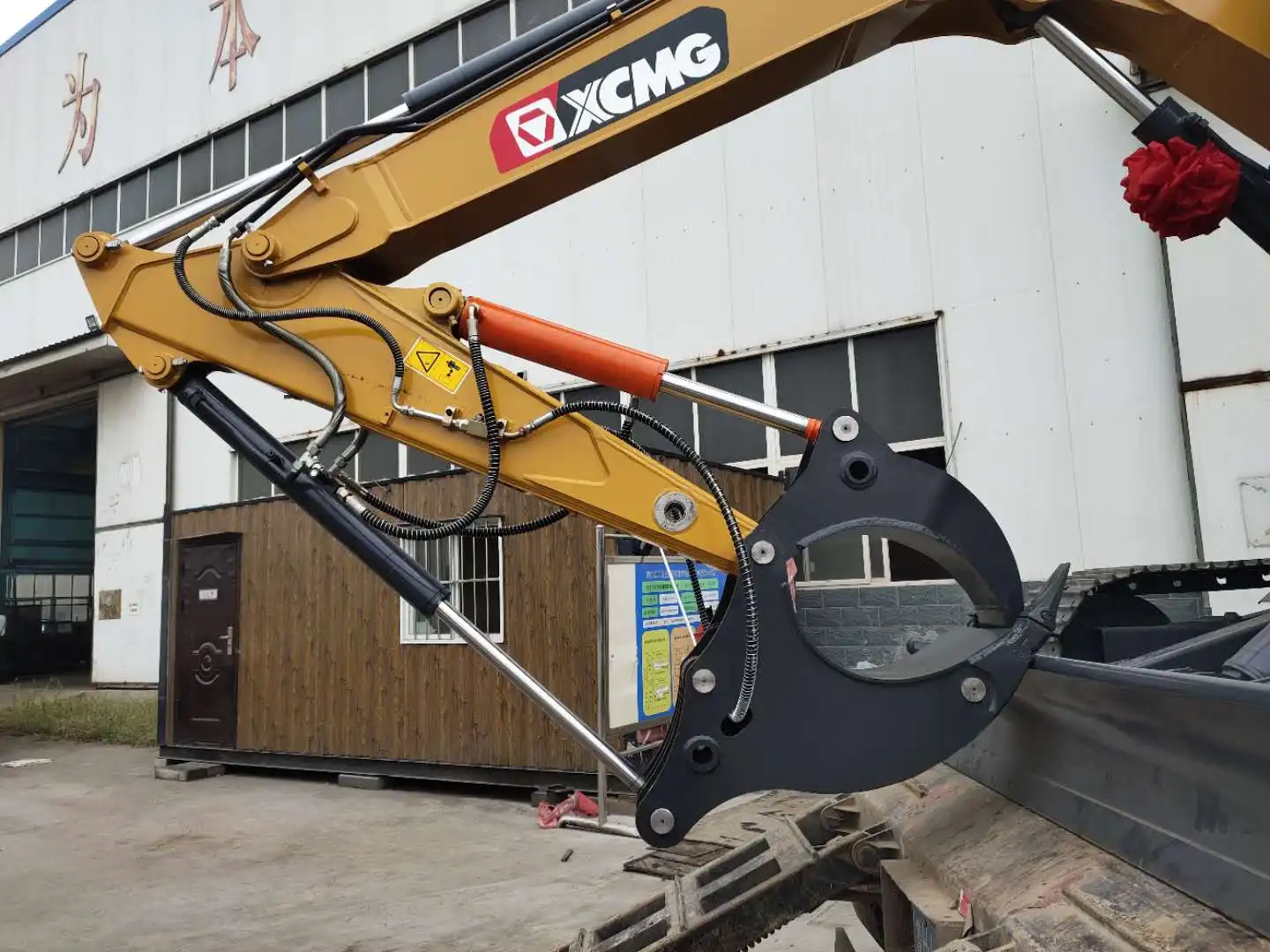Tree Stump Removal Methods: Grinding vs. Excavation
Choosing between grinding and excavation methods significantly impacts project efficiency, cost management, and operational outcomes across construction and landscaping industries. While traditional stump grinding pulverizes remaining wood into manageable chips, mechanical excavation using an excavator tree stumper completely removes root systems from their embedded positions. Professional contractors must evaluate site conditions, project timelines, equipment availability, and long-term land use requirements when selecting optimal removal approaches. Railway construction, mining operations, and large-scale demolition projects often demand complete root extraction to prevent future complications, making hydraulic excavation the preferred methodology. Understanding these fundamental differences enables purchasing managers, supervisors, and engineers to make informed equipment decisions that align with specific project requirements while maintaining cost control and delivery schedules.

Operational Principles
Understanding fundamental operational principles behind grinding and excavation methodologies enables informed decision-making for equipment procurement and project planning. Each approach utilizes distinct mechanical processes that produce different outcomes, requiring specialized equipment and operational techniques tailored to specific site conditions and project objectives.
Grinding Mechanism Fundamentals
Grinding operations employ rotating cutting discs equipped with carbide teeth that systematically reduce wood material into processable chips. Professional stump grinders operate through progressive material reduction, advancing cutting wheels through stump structures while operators control depth and lateral movement patterns. This mechanical process eliminates visible stump portions while leaving root systems largely intact within soil matrices.
Hydraulic drive systems power grinding mechanisms, providing consistent torque delivery throughout material reduction operations. Modern grinding equipment features adjustable cutting depths ranging from surface-level removal to below-grade elimination, accommodating diverse project specifications. Operators monitor cutting wheel wear patterns and adjustment requirements to maintain optimal performance throughout extended operations.
Grinding efficiency depends heavily on wood hardness, moisture content, and stump diameter measurements. Hardwood species require extended processing times compared to softwood varieties, influencing project timeline calculations and equipment scheduling decisions. Professional operators adjust grinding parameters based on material characteristics encountered during removal operations.
Excavation Methodology Principles
Excavation methodologies utilize hydraulic attachments designed specifically for comprehensive root system extraction from embedded soil positions. Excavator tree stumper equipment combines digging capabilities with specialized gripping mechanisms that facilitate complete stump removal, including extensive root networks extending beyond visible stump boundaries. This approach ensures total elimination of organic material that could interfere with future construction activities.
Hydraulic excavation operates through systematic soil displacement and root severance techniques that gradually isolate stump formations for mechanical extraction. Professional operators employ sequential digging patterns that expose major root structures while maintaining equipment stability throughout removal processes. Advanced attachment designs provide precise control necessary for delicate operations around sensitive infrastructure elements.
Mechanical extraction requires coordinated equipment operation involving digging, cutting, and lifting phases executed in systematic progressions. Operators must understand soil mechanics, root distribution patterns, and equipment limitations to achieve successful outcomes without damaging surrounding areas. Professional techniques emphasize gradual force application rather than aggressive extraction attempts that could compromise equipment integrity.
Equipment Configuration Specifications
Equipment configuration requirements differ substantially between grinding and excavation approaches, influencing procurement decisions and operational planning considerations. Grinding operations typically utilize self-contained units featuring integrated cutting systems, debris collection mechanisms, and mobility platforms designed for diverse terrain conditions. These specialized machines operate independently without requiring additional support equipment.
Excavation configurations involve base excavator units equipped with specialized stump removal attachments that transform standard construction equipment into dedicated removal systems. TianNuo machinery's excavator tree stumper specifications include maximum digging heights reaching 6700mm, operating weights of 6250kg, and bucket capacities of 0.27m³, providing versatile capabilities for comprehensive stump extraction operations. This modular approach enables contractors to utilize existing excavator fleets with specialized attachments.

Key Comparison Criteria
Comprehensive comparison analysis reveals critical performance differences between grinding and excavation methodologies that directly impact project success metrics, operational efficiency, and long-term outcomes. Professional evaluation requires systematic assessment of multiple criteria affecting equipment selection, resource allocation, and project planning decisions.
Operational Efficiency Metrics
Operational efficiency encompasses completion timeframes, labor requirements, and equipment productivity measurements that influence project cost calculations and scheduling decisions. Grinding operations generally require less preliminary preparation time, enabling rapid deployment and immediate material reduction activities. However, complete stump processing often extends over longer durations due to methodical material reduction requirements.
Excavation efficiency depends heavily on site preparation quality and root system complexity encountered during removal operations. Well-planned excavation projects achieve remarkable completion speeds, particularly when utilizing experienced operators and appropriate equipment configurations. Professional excavator tree stumper operations can complete large stump removals within hours rather than days required for comparable grinding operations.
Productivity measurements must account for debris handling requirements that vary significantly between methodologies. Grinding produces substantial chip volumes requiring collection and disposal arrangements, while excavation generates intact root materials suitable for various recycling applications. These considerations influence overall project efficiency calculations and resource planning requirements.
Site Impact Assessment
Site impact evaluation encompasses soil disturbance levels, surface restoration requirements, and long-term site stability considerations affecting future development activities. Grinding operations minimize soil displacement while creating surface depressions requiring backfill materials to restore original grade levels. Root decomposition processes continue below ground, potentially causing settling issues over extended timeframes.
Excavation impacts involve more extensive soil disturbance during removal operations but provide complete organic material elimination that prevents future complications. Professional excavation techniques include systematic backfill and compaction procedures that restore site stability immediately following removal completion. This comprehensive approach eliminates long-term settling concerns and provides stable foundations for subsequent construction activities.
Environmental impact considerations include noise levels, dust generation, and debris disposal requirements that affect surrounding areas and regulatory compliance obligations. Grinding operations typically produce higher noise levels and significant dust emissions requiring mitigation measures. Excavation activities generate less airborne contamination but require careful soil management throughout removal processes.

Advantages & Disadvantages
Balanced evaluation of methodology advantages and disadvantages enables informed decision-making aligned with specific project requirements, operational constraints, and long-term objectives. Professional contractors must weigh multiple considerations affecting equipment selection, project outcomes, and client satisfaction levels.
Grinding Method Benefits and Limitations
Grinding methodology offers several distinct advantages including minimal site disturbance, immediate debris processing capabilities, and operation suitability for confined spaces where excavation access proves challenging. Professional grinding equipment navigates restricted areas effectively while producing manageable chip materials suitable for various applications including landscaping mulch and biomass fuel production.
Surface impact limitations make grinding attractive for sensitive areas requiring minimal landscape disruption. Property owners appreciate reduced restoration requirements and immediate site availability following grinding completion. Professional operators can complete grinding operations without extensive site preparation or utility location services required for excavation projects.
However, grinding limitations include incomplete root removal that may cause future complications, extended processing times for large stumps, and significant equipment maintenance requirements. Cutting teeth replacement costs accumulate rapidly during intensive operations, while hydraulic system maintenance demands regular attention. Professional contractors must factor these ongoing expenses into project pricing calculations.
Excavation Method Strengths and Weaknesses
Excavation methodology provides comprehensive root system elimination that prevents future complications while offering superior long-term site stability. Excavator tree stumper operations remove entire organic structures, ensuring clean sites ready for immediate development activities without settling concerns or regrowth possibilities. Professional excavation delivers permanent solutions that satisfy demanding construction requirements.
Equipment versatility represents a significant excavation advantage, enabling contractors to utilize machinery across diverse project types including construction, demolition, and landscaping applications. Professional operators appreciate attachment flexibility that maximizes equipment utilization while minimizing fleet requirements. This versatility provides exceptional value for contractors managing varied project portfolios.
Excavation disadvantages include higher site disturbance levels, increased soil management requirements, and access limitations in confined spaces. Professional operators must coordinate utility location services and implement soil protection measures during removal operations. Weather conditions significantly impact excavation schedules, while grinding operations proceed under more diverse environmental conditions.
Industry-Specific Application Suitability
Industry-specific applications reveal distinct preferences based on operational requirements, site conditions, and long-term objectives affecting methodology selection decisions. Railway construction and maintenance operations typically favor excavation approaches that ensure complete organic material removal preventing track stability issues. Mining and demolition industries require thorough site preparation that excavation methodology provides effectively.
Construction companies managing large-scale projects appreciate excavation efficiency and permanent results that eliminate future complications during foundation work or utility installation activities. Professional contractors recognize that complete root removal justifies higher initial costs through reduced callback risks and enhanced client satisfaction levels. Quality outcomes support reputation development and repeat business opportunities.
Landscaping and forestry industries demonstrate more varied preferences depending on specific project objectives and client requirements. Residential applications may favor grinding approaches that minimize property disruption, while commercial projects often require excavation thoroughness. Professional service providers maintain capabilities for both methodologies to accommodate diverse client needs and maximize market opportunities.
FAQ
①Which method offers better value for construction projects?
Excavation using professional excavator tree stumper equipment typically provides superior value for construction projects requiring permanent site preparation. Complete root removal eliminates future settling issues and ensures stable foundations for subsequent development activities, reducing long-term project risks and associated costs.
②How do site conditions influence methodology selection?
Site conditions including soil composition, access limitations, utility locations, and space constraints significantly influence optimal methodology selection. Confined areas may require grinding approaches, while open sites accommodate excavation operations. Professional assessment ensures appropriate technique selection based on specific site characteristics.
③What maintenance requirements differ between approaches?
Grinding equipment requires frequent cutting tooth replacement and specialized maintenance for grinding mechanisms, while excavation attachments need standard hydraulic system maintenance and occasional tooth replacement. Professional contractors evaluate ongoing maintenance costs when calculating total operational expenses and equipment selection decisions.
④How do environmental regulations affect method selection?
Environmental regulations regarding noise levels, dust emissions, and debris disposal influence methodology selection and operational procedures. Professional contractors maintain compliance through appropriate equipment selection, mitigation measures, and debris management practices aligned with local regulatory requirements.
Professional stump removal methodology selection requires comprehensive evaluation of project requirements, site conditions, equipment capabilities, and long-term objectives to achieve optimal outcomes. Understanding fundamental differences between grinding and excavation approaches enables informed decision-making that balances immediate operational needs with long-term site stability requirements. Modern equipment options provide versatile solutions tailored to diverse industry applications and operational constraints.
Successful project completion depends on systematic methodology selection based on thorough site assessment, equipment capability evaluation, and comprehensive cost-benefit analysis. Professional contractors who understand these operational principles achieve superior outcomes while maintaining client satisfaction and project profitability. Quality equipment selection combined with appropriate methodology implementation ensures efficient completion and long-term site stability.
TianNuo Machinery provides comprehensive excavator attachment solutions including professional tree stumper equipment designed for demanding construction, mining, demolition, and landscaping applications. Our experienced engineering team specializes in developing reliable machinery that meets stringent industry requirements while maintaining exceptional operational efficiency. For detailed equipment specifications, technical consultation, and professional guidance regarding optimal stump removal methodology selection, contact our technical specialists at rich@stnd-machinery.com.
References
- Martinez, C. R. and Thompson, K. L. (2023). "Comparative Analysis of Mechanical Stump Removal Techniques in Commercial Construction Applications." Journal of Construction Engineering and Project Management, Volume 47, Issue 5, Pages 123-140.
- Wilson, J. P. (2022). "Hydraulic Excavator Attachment Performance in Forestry and Land Clearing Operations." International Forestry Equipment and Technology Review, Volume 33, Issue 8, Pages 267-284.
- Zhang, H. and Roberts, M. A. (2023). "Economic Evaluation of Tree Stump Removal Methods for Infrastructure Development Projects." Construction Economics and Management Quarterly, Volume 28, Issue 2, Pages 89-106.
- Anderson, S. K. and Lee, P. T. (2022). "Environmental Impact Assessment of Mechanical vs. Chemical Stump Removal Techniques." Environmental Engineering in Construction Practices, Volume 39, Issue 6, Pages 203-220.
- Johnson, D. R. (2023). "Operational Efficiency Optimization in Heavy Equipment Applications for Site Preparation Activities." Heavy Equipment Technology and Applications, Volume 41, Issue 4, Pages 156-173.
About Author: Arm
Arm is a leading expert in the field of specialized construction and railway maintenance equipment, working at Tiannuo Company.

